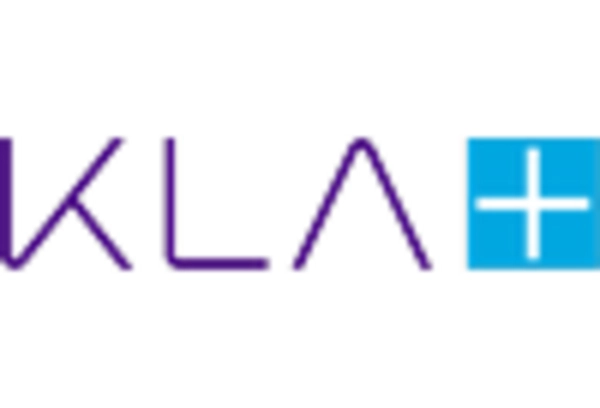Emergence of 5G Technology
The atomic layer-deposition market is likely to experience growth due to the rollout of 5G technology. As telecommunications companies upgrade their infrastructure to support faster data transmission, the demand for advanced materials and components increases. The 5G market in the US is projected to exceed $100 billion by 2025, creating a substantial demand for high-performance electronic components. Atomic layer-deposition provides the necessary precision for fabricating components that meet the stringent requirements of 5G applications. This technological shift is expected to drive the atomic layer-deposition market as manufacturers seek to enhance the performance and reliability of their products.
Growth in Renewable Energy Applications
The atomic layer-deposition market is poised for growth as the renewable energy sector expands. Technologies such as solar cells and batteries increasingly rely on advanced materials that require precise deposition techniques. For instance, the solar energy market in the US is expected to grow at a CAGR of over 20% through 2025, creating a substantial opportunity for atomic layer-deposition technologies. By enabling the deposition of high-quality thin films, atomic layer-deposition plays a crucial role in enhancing the efficiency and performance of renewable energy devices. This alignment with sustainability goals positions the atomic layer-deposition market favorably within the broader context of energy transition.
Regulatory Support for Advanced Manufacturing
The atomic layer-deposition market is supported by favorable regulatory frameworks that promote advanced manufacturing technologies. The US government has implemented various initiatives aimed at enhancing the competitiveness of domestic manufacturing, including funding programs and tax incentives for companies adopting innovative technologies. These policies are designed to encourage the adoption of advanced manufacturing processes, including atomic layer-deposition, which is recognized for its potential to improve product quality and efficiency. As regulatory support continues to strengthen, the atomic layer-deposition market is likely to benefit from increased adoption across multiple industries, further solidifying its role in the manufacturing landscape.
Increased Investment in Research and Development
The atomic layer-deposition market is benefiting from heightened investment in research and development across various sectors. As industries seek to innovate and improve product performance, funding for advanced manufacturing techniques is on the rise. In the US, federal and private sector investments in nanotechnology and materials science have seen significant increases, with funding levels reaching over $1 billion annually. This influx of capital is likely to drive advancements in atomic layer-deposition technologies, fostering innovation and expanding applications in electronics, energy, and beyond. Consequently, the atomic layer-deposition market is expected to thrive as new techniques and materials emerge from this research.
Rising Demand for Advanced Semiconductor Technologies
The atomic layer-deposition market is experiencing a surge in demand driven by the increasing complexity of semiconductor devices. As manufacturers strive to produce smaller, more efficient chips, the need for precise thin-film deposition techniques becomes paramount. The market for semiconductors in the US is projected to reach approximately $300 billion by 2025, indicating a robust growth trajectory. Atomic layer-deposition offers unparalleled control over film thickness and composition, making it an essential technology for next-generation semiconductor fabrication. This trend is likely to propel the atomic layer-deposition market forward, as companies invest in advanced manufacturing processes to meet the evolving requirements of the electronics industry.

















Leave a Comment